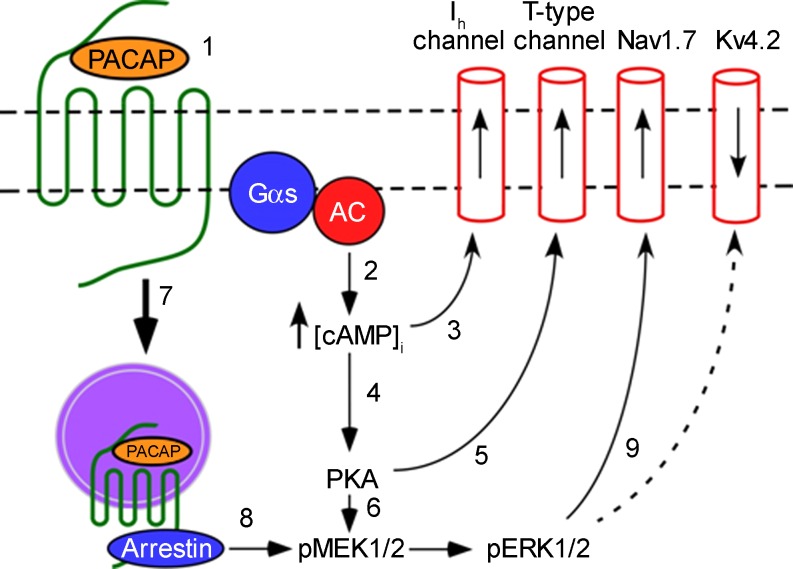Fig. 6.
Schematic of intracellular signaling cascades and ionic conductances potentially contributing to the PACAP-induced increase in cardiac neuron excitability. Interaction of PACAP with the PAC1 receptor (1) leads to activation of adenylyl cyclase (AC) and generation of cAMP (2). The rise of cAMP and interaction with hyperpolarization-activated cyclic nucleotide-gated channels enhance hyperpolarization-activated nonselective cationic current (Ih) (3), and a rise in cAMP also activates PKA (4), enhancing T-type channel currents through protein phosphorylation (5) and possibly contributes to activation of MEK/ERK signaling (6). Internalization of the PACAP/PAC1 receptor complex and formation of a signaling endosome (7) provides a scaffold for recruitment of the MEK/ERK signaling cascade (8), and activation of MEK/ERK kinase signaling potentially alters the voltage-dependent Na+ channel NaV1.7 through protein phosphorylation (9). For other cell types, a PACAP-induced decrease in surface expression of KV4.2 (dashed line 9) could also contribute to the increased excitability. Gαs, G protein α-subunit.

